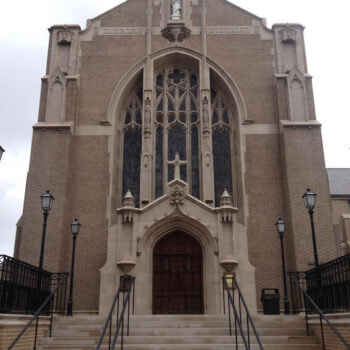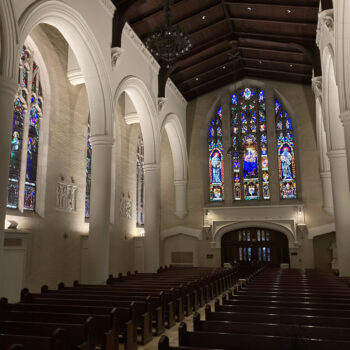French Ursuline nuns first arrived in New Orleans in 1727. The Ursulines established a convent and founded Ursuline Academy, the oldest continuously-operating school for young women in the territory of the modern-day United States. With the Louisiana Purchase of 1803, New Orleans became part of the culturally Protestant American nation. It was unclear to the Ursulines whether their institution would be welcome within the young republic, and they appealed to their French metropole for assistance. With France in the midst of the Napoleonic Wars, the Louisiana Ursulines were told only a direct appeal to the pope – with scant chance of success – might bring them aid. A direct appeal was issued, accompanied by a promise to the Virgin Mary that she would be honored in New Orleans under the title of Our Lady of Prompt Succor should the pope quickly return a favorable response to the Ursulines’ plea. The Ursulines’ request for assistance was granted by Pope Pius VII on April 29, 1809, just over a month after the letter of appeal had been mailed. The grateful Ursulines had commissioned a statue of the Virgin Mary holding the infant Jesus; this was conveyed to Louisiana, arriving in 1810, along with several additional Ursuline postulants for the convent and school. The Catholic Church attributes several miracles to Our Lady of Prompt Succor, most famously the victory over the British of the American army under General Andrew Jackson in the Battle of New Orleans (1815).
When Ursuline Academy relocated to its present campus in 1912, the Ursulines determined to construct a purpose-built shrine to Our Lady of Prompt Succor. In the wake of a successful fundraising campaign, the Gothic Revival National Shrine of Our Lady of Prompt Succor was dedicated in 1924.
The shrine is L-shaped (in plan) and clad in brick with limestone trim. The principal façade presents as a narrow, single bay, dominated by a tall stained glass window trimmed in limestone and divided into three vertical elements by two stepped stone piers springing from a protruding entrance portico. The front-gabled portico, clad entirely in limestone, rises to a decorative peak. An archivolt spans the recessed main entrance, with entry into the shrine afforded via carved wooden doors. Empty statuary niches capped with peaked canopies anchor the outside of the portico, and stepped brick piers flank the outside edge of the front elevation. Blind porticos executed in limestone rise from the steps, with empty statuary niches above. The other four principal elevations are dominated by large stained-glass window installations, trimmed in limestone and separated from one another by protruding, stepped brick-clad piers with limestone caps. A copper-clad spire rises from the roof at the intersection of the legs of the “L.” A one-story wing extends from the north elevation, while an octagonal turret is nestled in the crook of the “L”.
The Gothic Revival interior consists of two principal spaces, the two arms of the “L”. The first extends from the main entrance and features galleried side aisles, while the second is a column-less space. Extensive interior ornamentation is executed in limestone and brick.
The construction of the shrine within the Uptown-University neighborhood fits squarely within that area’s development history, as its completion was preceded by Tulane University’s move to its present campus, the nearby arrival of the Jesuit order, in 1912, with the establishment of Loyola University’s current location, and the subsequent construction of numerous additional public and private institutional facilities. The shrine not only contributes to the architectural fabric of the Uptown-University district; it also a key component of the historic Ursuline Academy State Street campus and underlines the prevalence of educational and cultural uses found within the Uptown-University Cultural District, a concentration unique in the state.
In recent years Crescent Growth Capital has repeatedly helped Ursuline Academy leverage its capital projects fundraising to generate tax credit subsidies, and in March 2013, Crescent was approached by the Ursuline Sisters to provide contingent fee-based historic preservation consulting and historic tax credit monetization services in support of a $2.2 million rehabilitation of the shrine.
Crescent Growth Capital’s in-house historic preservation specialist prepared a three-element Louisiana State Historic Preservation Certification Application over thirty-one months. Part 3 approval was received on May 17, 2016, with credit monetization accomplished by Crescent and tax credit sale proceeds delivered to the Sisters of Ursula in July.
2701 State St, New Orleans, LA 70118






